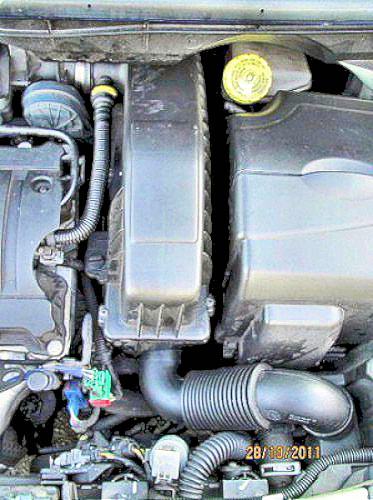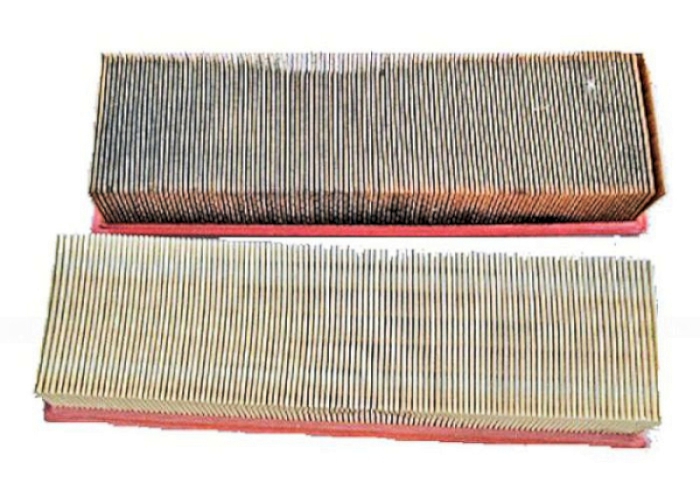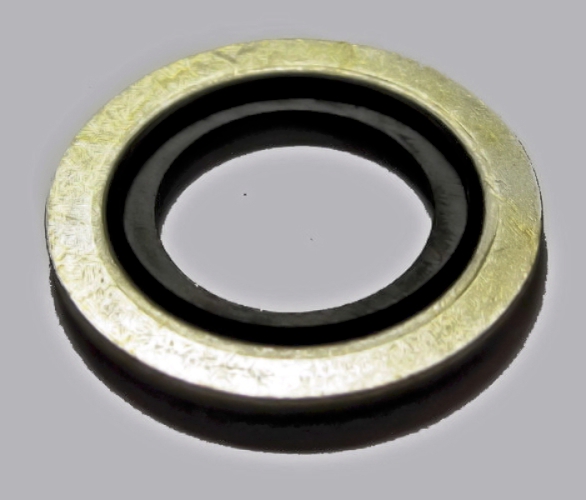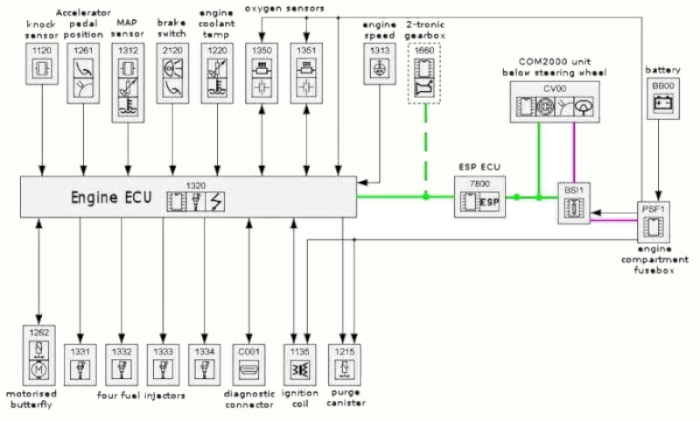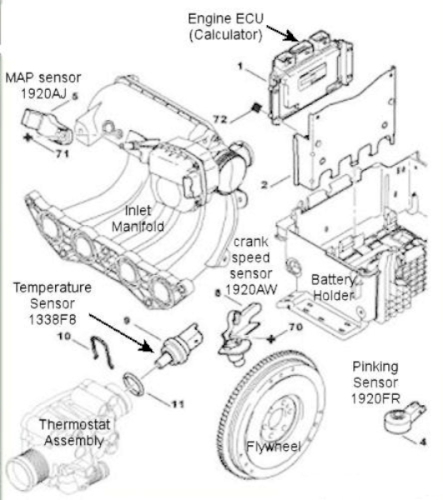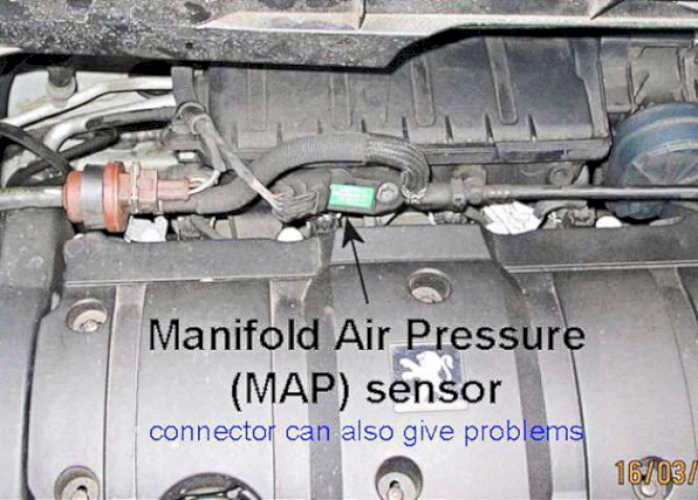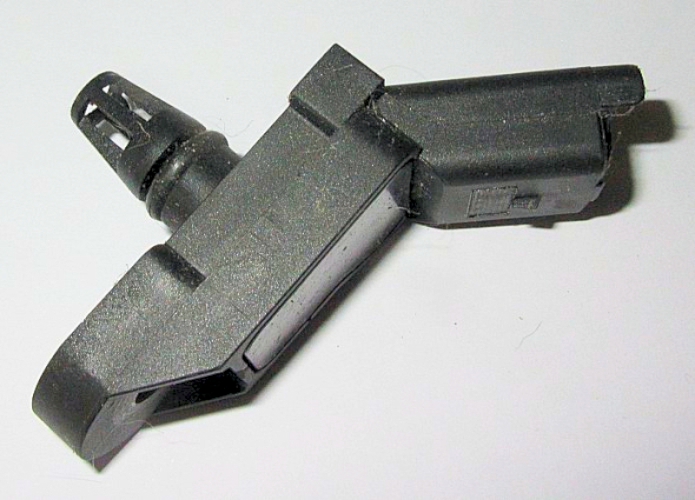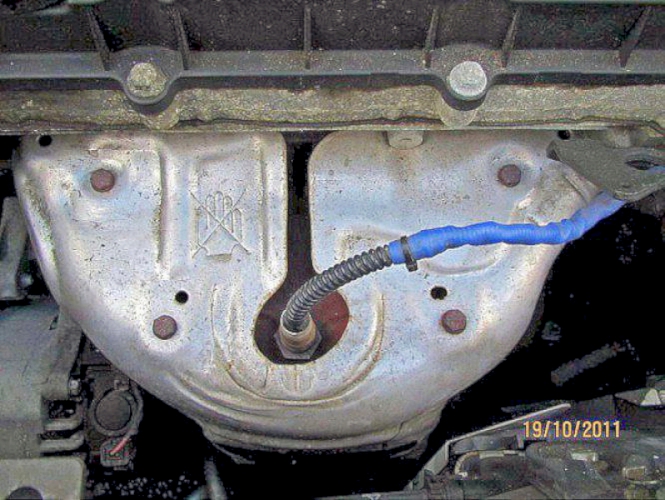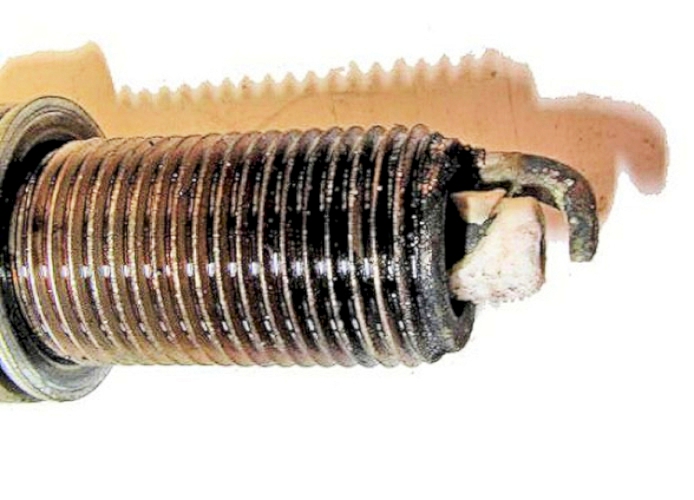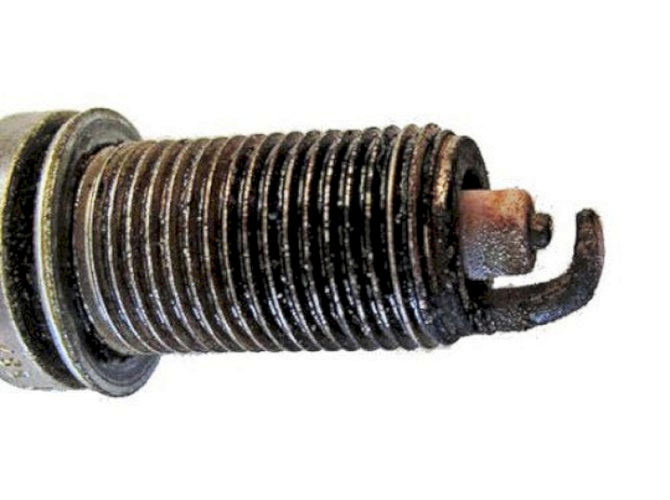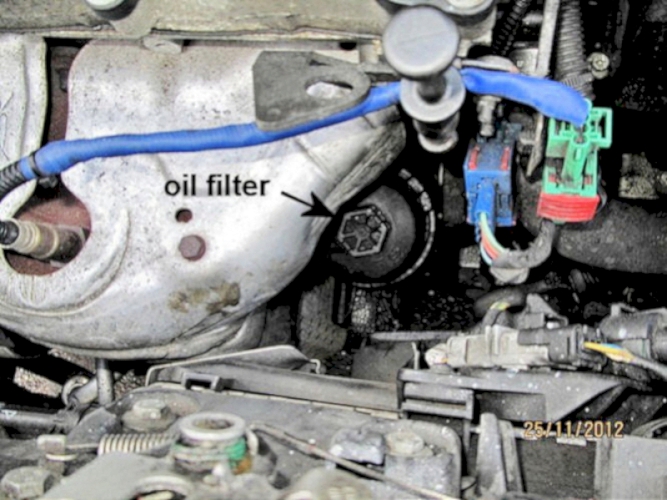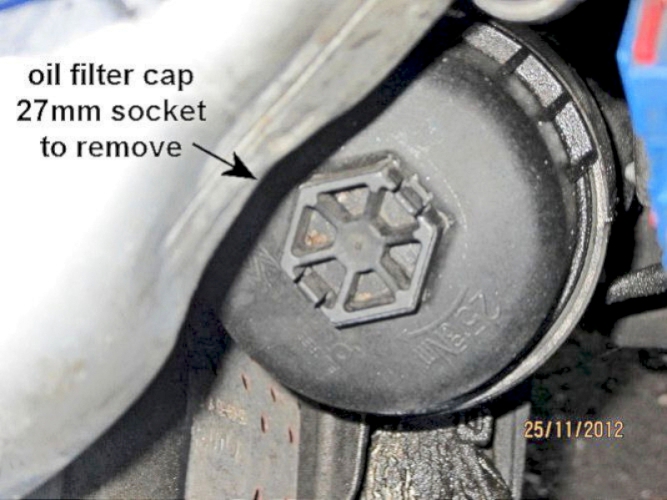
Peugeot 1.6 Engine
1587cc
Peugeot say that UK vehicles should do 20,000 miles between services; in fact it should be 20,000km and they simply didn't change the software for the UK. This can be corrected via PP2000 to get a true miles readout. Yes, I know it says a tiny "miles" on your screen; they changed that but not the 20,000 - so the countdown SHOULD have started at 12,500 or thereabouts. This is the reason for the ridiculous 40,000 miles expected of the spark plugs - and probably the cause of many failures to start or run properly. Changing plugs at 25,000 miles would have been far more realistic!
Also note that Peugeot number their cylinders unconventionally so that #1 is at the FLYWHEEL/CLUTCH/GEARBOX end, and #4 is at the cambelt/auxiliaries end.
see here for Lambda O2 sensors
see here to change the Thermostat
see here for Auxiliary Belt and Cam Belt change
see here for Gearbox lubrication
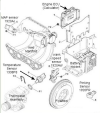
Crank Position Sensor (there is no Cam Position Sensor on these cars)
Part number 1920AW - is common to many Peugeot engines and bolted to the top of the gearbox bell housing.
Appears to be very reliable but a failing one might cause intermittent or difficult starting
Water Temperature Sensor

The thermostat itself is quite complex as it incorporates the water temperature sensor and two pipe stubs, as well as the thermostat itself all in one unit. Removing the thermostat is not straightforward as the coolant has to be drained and several water pipes disconnected. To change thermostat, see here
Erratic starting and/or loss of power

Can be caused by the MAP sensor (Manifold Air Pressure) also known as the MAF (Mass Air Sensor) on the black plastic intake manifold just above the injectors with a clip on brown plug. The connector can also cause problems so check first before changing the sensor.

The MAP/MAF has a dual function as it measures both the airflow (heated wire) AND the temperature of the air (thermistor) entering the engine.
The remedy for intermittent operation is to carefully close (they break easily) and spray electrical cleaning fluid on the contacts. Plug back in and run the engine until hot or over 85°C - switch off and restart the engine four times. After the fourth time the engine light should clear.
Sudden loss of power - engine light (MIL) lit:
As a result of Peugeot having extended plug change intervals to 40,000 miles, the 1.6 engine misfired big time at 32,000 miles and had to limp home.
On a journey, the car suddenly went into limp mode, with very limited power, and the MIL light came on. I had to complete the journey - ten miles in all so fingers crossed nothing else (O2 sensors or Cat) have been damaged.
The next morning, the code reader showed three Peugeot Specific codes - P1336 (high misfire on several cylinders); P1337 (ignition cylinder 1 misfire) and P1339 (ignition cylinder 3 misfire)

Suspicion fell upon the coil unit, a known weak point so off with the engine top cover (20 torx) and out with the coil pack (also 20 torx)

Once removed, it was found that ALL plugs (Bosch Super FR8SEO) were very worn and gaps were around the 54thou mark (should be 30thou). Peugeot only recommend they be changed at the 40,000miles service - these didn't make it by 8,000 miles!

In addition, the ceramic insulation of one plug was broken (cylinder 3*) - which is what had caused the misfire and limp home.
I suppose, if the plug hadn't broken, the car would have carried on to 40,000 with ever-increasing gaps and quite possibly damaging the coil pack and/or the cylinder.
*Cylinder 3 as counted starting from the clutch end on Peugeots.

The new plugs are NGK Iridium types ILFR6B. These are supposed to last at least 50,000 miles so should see me and the car out! They came gapped to 30thou.
NGK give them a life expectancy of 40-50k miles. But they have to temper their projections as driving conditions and motor modifications differ. Typically we have found you can expect 60,000 to 80,000 miles on an unaltered motor.
All the above codes were cleared the next day and there have been no further codes
Peugeot Intermediate Service:
Check and top-up - Engine Oil; Brake Fluid; Coolant; Screenwash. Visual check of whole vehicle; Checklist to Customer.
I wonder how much all THAT cost?
No checking of filters, oil change or plugs. After severe misfiring, I discovered that all the plug gaps had opened up to 54thou - all filters were dirty and I have my doubts about the oil which smelt funny and was rather black.
Done them all now, just a very basic service in my opinion but I dread to think how bad they might have been in another 8,000 miles!
Changing the Oil filter:

This is a fairly straightforward task once you appreciate that you will need a large socket spanner to fit on the head of the filter canister.
Lift the bonnet; the filter is inside the black canister down low between the front panel and the engine just to the right of the exhaust manifold. Needs a large socket (27mm) to undo the top nut - then the cover comes off and the filter is inside; my filter came out with the cover. Clean the cover and fit a new sealing ring after oiling it.

Do fit a new oil seal onto the drain plug to avoid leaks.
Make sure the engine has the fresh oil in. It takes 3.25 litres of 5W/40 fully synthetic oil, never cheap oil. Or only 3 litres if the filter isn't changed at the same time.
I use Halfords 5W/40 fully synthetic myself - the Service Book says to use Total 5W/40 fully synthetic but I doubt there is any difference. I change mine (and the filter) about every 10,000 miles; I reckon 20,000 is too far to go even on synthetic.
Start the engine; don't rev until the light goes out (about two seconds). Stop the engine and recheck the level as some will have gone into the filter.
Check underneath for any drips - if none then job done!
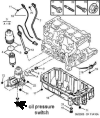
In case the oil warning light comes on - after checking the oil level, the oil pressure sensor appears to hang down underneath the oil filter housing - part no 1131C5
Oil Leaks:
Can be caused by the oil filter housing cap and seal not fitted properly after a service
Simeon Boys-layton also advises: The most common place for a leak on tu5jp4 1.6 petrol engines is where the filter assembly attaches to the block which initially looks like a leak from the head. It can be fixed with seal kit from Peugeot or maybe even gasket maker. It often gets mistaken for oil being dripped from a filter change.
You should see the leak down the front of the block making its way down to the sump; it is tricky to get to as the exhaust manifold is in the way. It maybe doable without removing the exhaust but my guess is it’s easier if you remove the cat. Visit the 107 forums for tu5jp4 and "filter assembly leak" you should find what you need.
Changing the Air filter:

This is a fairly straightforward task once you appreciate that the assembly comes out in one piece and then has to be taken apart to fit the filter.

Disconnect the air supply and delivery pipes:
1. Ventilation pipe; push the yellow clip in to release and remove the pipe.
2. Loosen the large circlip around the air outlet pipe to the inlet manifold.
3. Air inlet - rotate the right angled connector to disconnect from the bottom of the air filter housing.
4. Turn and release locking screw and jiggle air cleaner assembly out.

Remove 5 cross-point headed screws and replace filter.
The new air filter is much cleaner than the old one was - it had probably done 32,000 miles from new as Peugeot only expect to change them every 40,000 miles.
I have now fitted a direct fit K&N panel air filter eg ebay K&N air filter Peugeot 1007
Details of servicing K&N Filters here
Resetting the Service Indicator
hold in the tripmeter reset button and then turn ignition on and keep it holding in for at least 15 seconds
Anti-Freeze
I lost some of the water/antifreeze when I replaced the thermostat and replaced it by soft water from the tap. When I checked the (original) antifreeze was green in colour; the top-up I got from the Peugeot dealer was red so I didn't use it. When I checked I still had about 40% green antifreeze so should be OK for where I live in the UK.
However I found that Toyota uses a red antifreeze in many of its products and should not be confused with the orange type long life antifreezes. It is essentially the green type of antifreeze that contains red dye to give it the red colour. The Peugeot Stores operative confirmed this was correct and to top up with the red as supplied.





